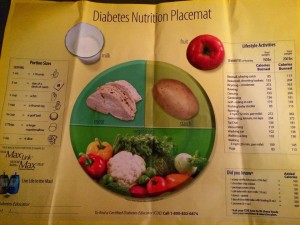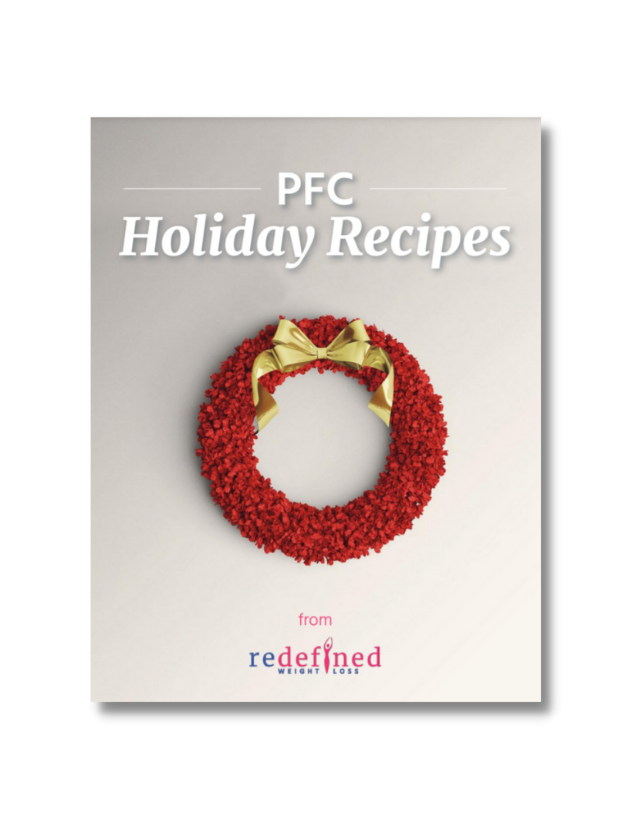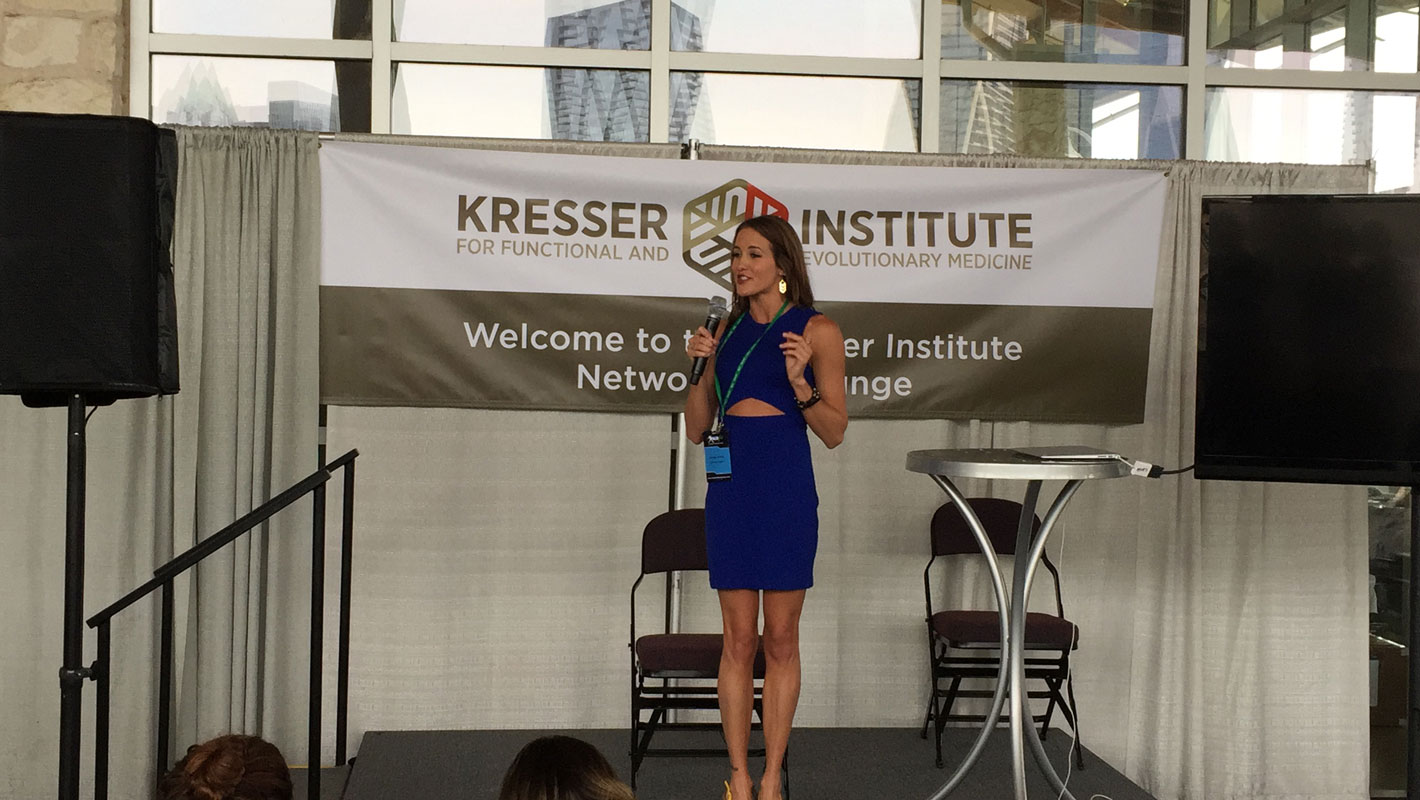In our personal coaching program we work with hundreds of clients who have diabetes and, time and time again, we see their need for blood sugar reducing medications (like insulin and Metformin) decrease when they eat more fat. A common misconception when you are diagnosed with type 2 diabetes is you’re doomed to forever be “a diabetic” and your need for pills and insulin will continue to increase for the rest of your life. This flat out isn’t true. We can prevent and reverse the damage in our cells when we are eating the right foods in the right amounts, and this includes plenty of fat.
We know that healthy fat is important for everyone, for a million different reasons. If I were to pick one population who especially need to eat fat, even more than most, it would be people with diabetes. Ironically, this is the exact opposite of what we are being taught by the American Diabetes Association and the Academy of Nutrition and Dietetics.
These same associations are known to cover up blood sugar imbalances with prescription medication, not the functional medicine, real food approach we embrace here. The standard diabetes treatment approach is a backwards, “after the fact” approach because it focuses on treating the symptoms rather than the underlying cause. With proper nutrition, medication isn’t needed to target elevated blood glucose levels. Carbohydrate counting is still considered the “gold standard,” ensuring that people with diabetes are getting “enough” carbohydrates for blood sugar control, with the general goal being 45-60 grams at meals and 15-30 grams at snacks. This boggles my mind since carbohydrates are the VERY thing that cause spikes in blood sugar levels! Fat doesn’t spike blood sugar levels, carbohydrates do. Once you understand the science behind the importance of fat for people with diabetes, you can quit feeling guilty about pouring melted butter over your vegetables and heavy cream in your coffee.
Before we look at the critical role fat plays in managing and reversing diabetes, let’s take a look at:
The Normal Blood Sugar Response:
When you eat a carbohydrate, regardless of the source (bread, pasta, rice, cookies, candy, soda and even vegetables and fruits), it turns into sugar the moment it hits your bloodstream. Your blood sugar levels spike, which is alarming to your body, so it triggers your pancreas to quickly secrete insulin. Insulin’s job is to unlock the door to your cells, allowing glucose to get into the cell and out of the bloodstream, in turn driving blood sugar levels back down to normal. Once in the cell, glucose can be used for energy or it can be turned into fat and stored if it’s not needed. This works only if cells respond to insulin.
It’s not a good idea to overwork the pancreas by asking it to make more and more insulin. You may know, if you are a person with diabetes (or the arbitrary “pre-diabetes”), your cells have become resistant or desensitized to the blood sugar lowering effects of insulin. This happens when cells are exposed to too much sugar and insulin which is due to blood sugar levels being constantly elevated (too many carbohydrates, too often). It’s like when you walk into a noisy party and can’t hear a word your spouse is saying, and after a little while you can because you begin to drown the noise out. That’s what happens with insulin resistance as your cells are bathed in insulin and no longer “hear” the insulin’s command to open the door to your cells to take in the glucose, thus lowering blood sugar levels. As a person with diabetes, your goal is not to increase your insulin requirement but to decrease it, which in turn gives your pancreas a break and also reduces your need for an insulin supplying medication.
*2015 Diabetes Placemat recommends mostly carbohydrate and a few ounces lean protein, and no fat.
Now that we understand how blood sugar works, let’s revisit why what is traditionally being taught is flat out wrong. I’m here to tell you that what may have been recommended to you in the past, consuming 45-60 grams of carbohydrate at every meal, is NOT the best way to control your blood sugars. In fact, it only causes more damage. Consuming LESS of what causes your blood sugar levels to spike (carbs!) and balancing ’em out with more healthy fat (and protein) will give you more control over your blood sugars. You can balance blood sugar levels by eating the right foods in the right combinations! Around here, we call it PFC (Protein, Fat, Carbs). And who doesn’t want permission to eat more butter and bacon? 🙂
Let me explain.
5 reasons why people with diabetes NEED to eat fat!
1. Fat is satiating. It’s natural and easy to consume fewer carbs when you pair ‘em with fat because of the wonderful fat satiety factor: it fills you up! Thus, generally when you eat fat, you eat fewer carbs. Fats send your brain a hormonal message (cholecystokinin) telling you to stop eating. That’s why when you eat a banana by itself it doesn’t fill you up, and an hour or so later, you may even be hungrier than you were before you ate it. When you pair just half of that banana with a handful of almonds and have a beef stick or hard boiled egg with it (PFC balanced!), it fills you up and you feel stable until your next meal. Not only are you more satisfied, but you’re also consuming way fewer carbs (sugar). By consuming fewer carbs, you are giving your pancreas a break, allowing your body to heal.
2. Fat is the best buffer for carbohydrates, and it lowers your insulin requirement. Fat slows the absorption of carbohydrates into the bloodstream, thus promoting blood sugar stabilization. When you consume fat along with a carb source, it’s like you’re riding the slow and steady bunny coaster instead of a crazy, jarring blood sugar roller coaster. Since fat lessens the blood sugar spiking effect that carbohydrates (sugar) have, you don’t require a big surge of insulin. When you eat a carbohydrate by itself, you ask your pancreas to sprint a marathon as it tries to keep up with the sugar you are overloading your body with. Fat on the other hand, doesn’t stimulate an insulin release.
3. Fat promotes nutrient absorption. Vitamins A, D, E and K all need fat for their absorption into the body. Without fat, we don’t get the benefit of these powerful nutrients. People with diabetes can benefit from even more specific nutrients for blood sugar support. We recommend targeted quantities of these nutrients in the form of supplementing with high quality, pharmaceutical grade formulas that can only be sold through a licensed practitioner (the kind offered in the Redefined Vitamins Store). Our general baseline recommendation for all of our clients with diabetes or pre-diabetes is Opti Glucose Redefined, Berberine Pro, Glutamine, Probiotic Redefined, and a blood sugar balancing protein powder.
Our clients see great results when adding in these key supplements in addition to focusing on eating PFC balanced. Now, what would be the point of making it a priority to take these great supplements if you weren’t absorbing them? This is where fat comes in. Fat helps promote nutrient absorption, making your supplements more efficient once they make it into your body, giving you the greatest effect and leading you one step closer to healing your diabetes.
4. Fat improves brain function. Fat is essential for nerve health as it supports the myelin sheath, which helps your brain make sense of the many messages it receives daily. Bumping up fat intake can also reduce risks of cognitive impairment and memory loss, which are common among those with diabetes. Improving brain function adds to quality of life, reduces stress and frustration, and it helps you remember to take your blood sugar support supplements mentioned in the previous point!
5. Fat is important for hormone production. A lot of our clients with diabetes have hormonal imbalances, and fat plays a critical role in hormone production in both women and men. Fatty acids provide the chemical structure of most hormones and balanced hormones leads to emotional stability, a tamed appetite, decreased cravings and consistent energy levels.
How much fat? For most people with diabetes, a good starting point is having two to three tablespoons of fat every single time you eat—meals and snacks! This could mean sautéing your veggies in a couple tablespoons of coconut oil at dinner or having a heaping spoonful of almond butter on your apple at snack time. For some of our clients, we find they benefit from even higher amounts of fats, which work best for balancing their blood sugar levels.
What kind of fat should I eat? Glad you asked because not all fats are created equal. We recommend avocados, butter, coconut oil, olive oil, nuts, seeds, cheese, olives, coconut milk (the canned kind), heavy cream, nut butters, coconut cream and fat from organic, grass fed meat (we refer to these as “healthy fats”). We recommend staying away from processed fat sources like canola oil, corn oil, soybean oil, safflower oil, sesame seed oil, cottonseed oil, vegetable oil, shortening and margarine. Also, any oil that has been hydrogenated or partially hydrogenated is a trans fat and should be avoided at any cost.
So now you understand my frustration when it comes to the mind boggling traditional advice STILL being given to those who are struggling with controlling their blood sugar levels. Drugs used to control diabetes are just expensive band aids with horrible side effects. Check out my next post, “5 Crucial Supplements for Blood Sugar Balance,” in which I explain how our clients have been able to manage and reverse diabetes with real food and quality supplementation instead!
I would love to invite you to our FREE online Facebook Community, A New Way To Weight Loss! This group is all about helping helping people like you stop the vicious dieting cycle, end the obsession over food and lose weight effortlessly—while enjoying what you eat, and feeling like your happy, confident self again. This as a community where we can connect and support each other and have a conversation with you about your weight loss goals. Click here to join A New Way To Weight Loss!














I just found your blog! I love it, Cassie. I posted this on FB, but in case others don’t see it, but they come here, I’ll repost my comment.
I have to say, LCHF saved me and my T2 diabetes is completely under control. (Medication free now) And to suffer some mild embarrassment, I’ll show you a photo. How FAT my face was. How BAD my skin was… Then and Now. wink emoticon I’m all about the healthy fats! I’ve lost 63 lbs. HBA1Cs. 5.3 and feeling amazing!
I’ll be 50 in 9 months. I feel better now than I did when I was 40.
I just unfollowed and unliked Paula Deen on facebook today because she said her new cookbook, which she called “diabetic friendly”, used recipes with low-fat ingredients, and some still had sugar and grains. I wish she’d hire somebody who knew what they were talking about!
🙂
Love this article: with my A1c in the mid-7 range, I found your site in JUN-2014. To his credit, my doctor said nothing about how to do it, only to (1) lose weight (2) seek professional nutritionist advice (nothing about high carb/low fat was mentioned).
I had started eating smaller, more frequent, meals, but after reading your PFC guidelines, I added a dab of full-fat greek yogurt and a dab of natural almond butter to my morning veggie smoothies (and a raw, pasteurized, egg on work out days); I added some cheese cubes to my morning 1/2 apple snack (and a boiled egg); and I added almond butter (and a 3oz slice of turkey) to my afternoon 1/2 apple snack. Lunch and dinner also got a fat and protein boost. (And, I should point out, all accompanied by carb trading doughnuts and cookies for bananas and apples, and some bananas and apples for broccoli and greens … and *much* less processed foods.)
After three months, at my annual physical, I’d lost over 40 lbs (being a big guy to start with), my A1c was sub-6, and I was able to stop taking Metformin (and three other meds!)
This approach does work, and is much more appealing (and sustainable) than constantly being on the lookout for low-fat alternatives (and ones that don’t add back in sugar for the eliminated fat!) and continually thinking about what I can no longer have but instead about how to have what I want with blood sugar spikes taken into account (e.g., I still allow myself – one! – doughnut at work on Friday’s, but I eat it a pinch at a time – try it, it tastes just as sweet to your taste buds – and it takes until after lunch to eat only a third of it, by which time I’m sick of looking at it and toss it).
Awesome!! Thanks for sharing 🙂
Thanks for this!